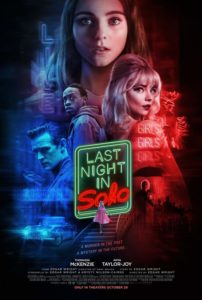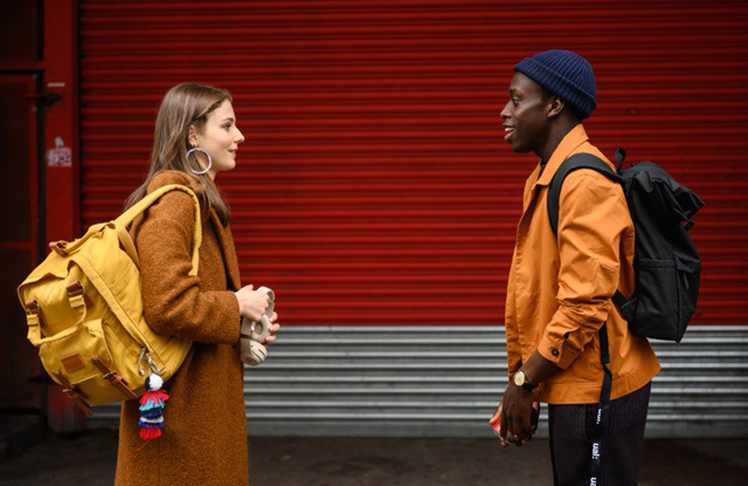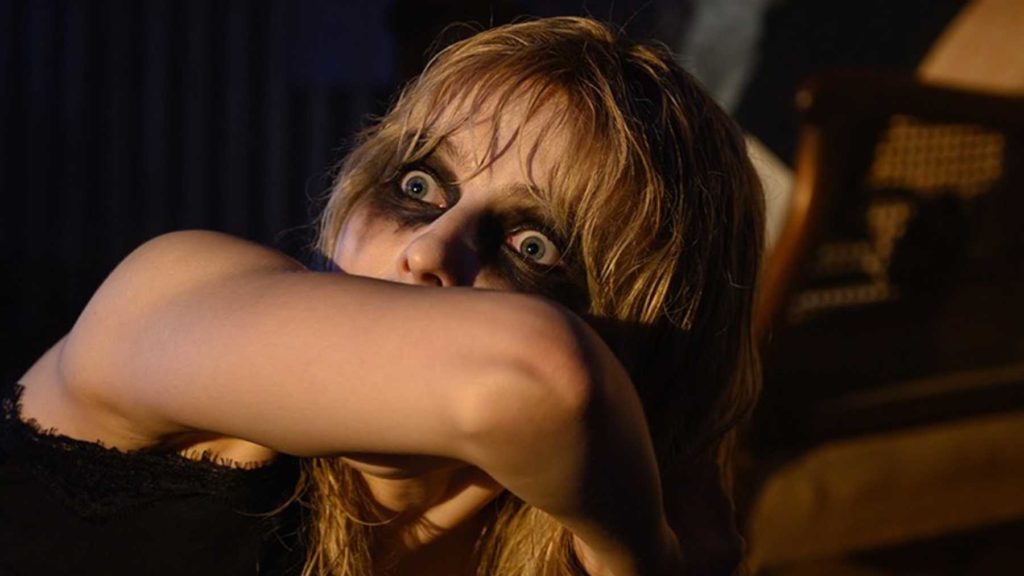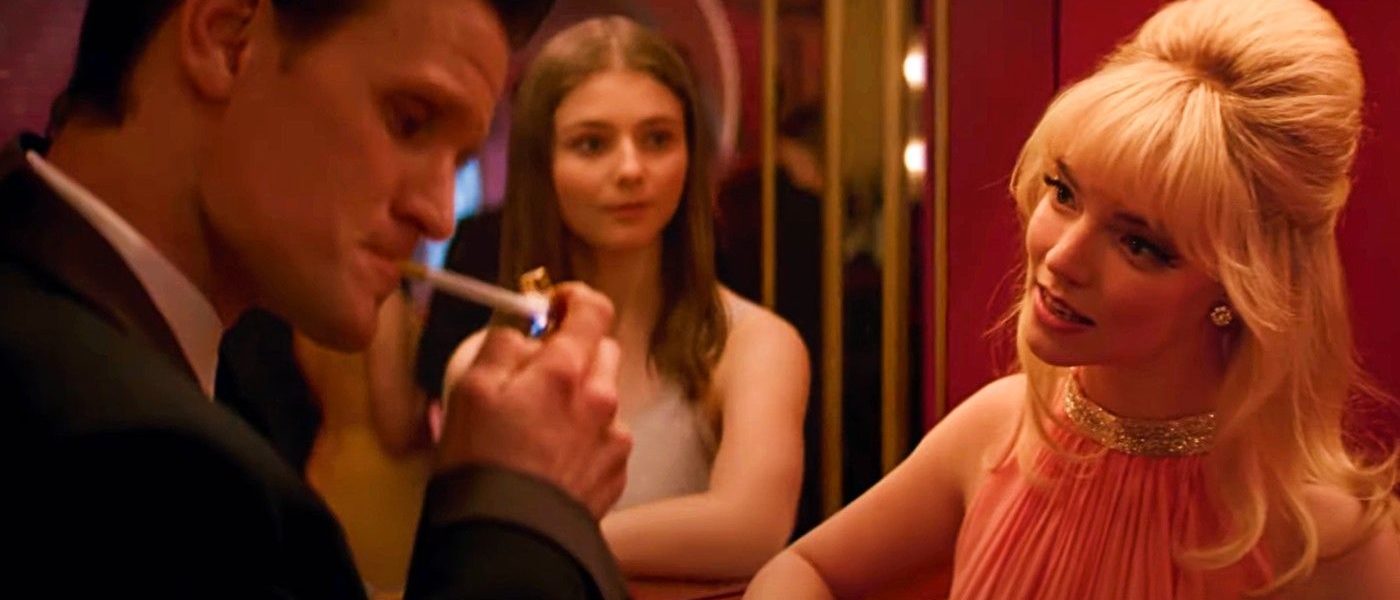Edgar Wright’s Candy Colored Psychological Horror Film Doesn’t Hold Back
DIRECTED BY EDGAR WRIGHT/2021

Edgar Wright has never been a subtle filmmaker. He is an artist of bold, brash, distinctive designs in movies like Shaun of the Dead, Scott Pilgrim vs. the World, and Baby Driver. Whatever trace amounts of subtlety and reserve seeped through in earlier films, they are gone from Last Night in Soho. The film is partly set in the world of fashion design and has the effect of much high fashion: some audience members will delight in the film’s audacity. Others will find it overwhelming, tasteless, and absurd.
And there may be other viewers like myself who, immediately after watching the movie, thought it was much too much. But I find my opinion shifting as the film steeps in my memory. In part my appreciation stems from recognizing the influences on Last Night in Soho. If Wright wasn’t, in part, paying homage to Repulsion, Carnival of Souls, and the genre of Hag Horror (aka Grand Dame Guignol), I’ll eat my hat. I sincerely, unironically love those films and that genre despite their grotesqueries. So why not embrace the same in Last Night in Soho?
Last Night in Soho stars two rising young actresses, Thomasin McKenzie (Leave No Trace, Jojo Rabbit) and Anya Taylor-Joy (The Witch, Queen’s Gambit). McKenzie plays Eloise, a young girl newly arrived in London to study fashion design. Following her mother’s death by suicide, Eloise was raised in Cornwall by her grandmother (Rita Tushingham), who hints that Eloise shares her mother’s sensitivities and warns her of the dark side of London. Eloise, who is obsessed with mod, 60s era London, iis unfazed and heads to school overjoyed at the prospect of becoming a designer.

Eloise soon finds out that her grandmother wasn’t all wrong. The first man Eloise encounters, her taxi driver, aggressively hits on her. Her roommate and the other students she meets on her first night in the dormitory are wealthy, snooty, and contemptuous of Eloise’s country upbringing and quirky homemade clothes. Only one other student, John (Michael Ajao, “Mayhem” in Attack the Block) shows kindness toward Eloise and becomes her friend. The chaotic atmosphere in the dorm leads Eloise to rent a bedsit from a curmudgeonly old woman, Mrs. Collins (Diana Rigg). The room has been barely updated since Eloise’s beloved 60s, and the neon light from the French bistro next door flashes in the window all night long. It is, in Eloise’s estimation, perfect.
On her first night in the new room Eloise begins having long, vivid dreams about Sandie (Taylor-Joy), a glamorous, aspiring young singer in 1966 London. In her dreams, Eloise sees Sandie begin a romance with her new manager, Jack (Matt Smith). The shy, sheltered Eloise finds Sandie’s life so exciting that she quickly becomes obsessed with copying her style and wants nothing more than to experience the next “chapter” of her dreams. That is, until the dreams turn nightmarish and begin to intrude into Eloise’s life outside of her sleep. Eloise sees Sandie’s hopes of headlining at the Cafe de Paris turn to burlesque and then to being sex trafficked by Jack, who is really a cunning and brutal pimp. Soon Eloise is tormented by spectres from Sandie’s past, images of violence, and a suspicion that a smooth talking silver haired gentleman (Terence Stamp, at his oiliest) is a murderer who has heretofore escaped justice.
I won’t reveal plot twists in Last Night in Soho, but themes of the ideal vs. the real, of glossy surface vs. dark underbelly, of innocence vs. corruption pile up on top of each other. Shy, naive Eloise and bold, ambitious Sandie may seem wildly different, but neither of them is prepared for the predatory nature of the city around them. As Eloise draws closer to madness, Wright ramps up Last Night in Soho’s garish colors, flashing lights (those who are sensitive to strobe effects, beware), and mind-crushing soundtrack. Needle drops have never seemed so aggressive.

McKenzie and Taylor-Joy are well cast but both Eloise and Sandie are flat characters. Thomasin McKenzie has delicate features and expresses vulnerability well. For the first half of the movie she is largely confined to looking either doe-eyed or startled. As Eloise’s mind starts to fray she spends more and more time falling back in terror and screaming. It’s not exactly a character arc and John’s commitment to her after only a few weeks of knowing her is a bit of a puzzlement. (Ajao’s character suffers from the same problem as McKenzie’s, by the way. As the one good guy in London, John seems almost simpleminded in his sweetness and unwavering devotion to Eloise. What makes John tick or why he is attracted to this clearly troubled young woman is never explored.)
As for Taylor-Joy, Wright initially wanted her to play Eloise. She’s a great actress and I’m sure she could have pulled it off, but it’s hard to imagine. Anna Taylor-Joy has a much more unusual look than McKenzie. She often looks as if she’s hiding a secret – perhaps delicious, perhaps dangerous, maybe both. With the cat eye makeup and mod fashions, Taylor-Joy seems natural as a young woman who knows how to draw attention. Unfortunately, what she wants from that attention and what the men around her wants are at odds. Wright and his co-writer, Krysty Wilson-Cairns drive home how little actual power a young woman – even a beautiful, confident one – had in the swinging London of 55 years ago.

Diana Rigg died during post-production on Last Night in Soho. Her role as Mrs. Collins – stern, unsentimental, her mouth painted into an angry red line – is an honorable ending to a distinguished career. It’s also a referential nod to her most famous role, as Emma Peel in The Avengers from 1961 to 1969. No one else on screen better embodied the sleek, fashionable mod style; but Rigg was also honest about not enjoying her status as a sex symbol and not appreciating the way women were treated in the entertainment industry. Last Night in Soho begins with the dedication: “For Diana.”
The characters in Last Night in Soho are more types than people, but the sheer force of the movie is hard to deny. It felt like too much, it probably was too much, and sometimes I appreciate films that are willing to be too much. Last Night in Soho winds up in a place that is flat out, full tilt, bonkers. But this is, after all, a horror movie and when it comes to horror, restraint is often overrated.


